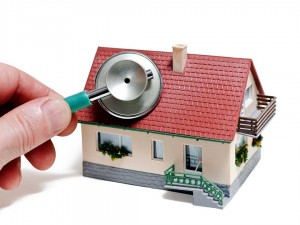Sick Building Syndrome and VOCs (Volatile Organic Chemicals)
Much attention has been paid to the quality of the air in our homes and its effect on our health, including the rise in respiratory irritations such as asthma. One of the major contributors to poor air quality is the release of volatile organic chemicals (VOCs) from many of the items contained in our homes.
Sick Building Syndrome
VOCs are virtually unavoidable in our environment. For example, have you ever noticed the strong smell that comes from most paints, stains and varnishes? Much of the content of those fumes are VOCs and your instincts are right – those fumes are bad for you. These chemicals are also present in many other less obvious areas of your home. Items containing varying levels of VOCs include carpet, insulation, flooring, kitchen cabinets, countertops, plywood, particleboard, computers, mattresses, cleaning supplies, copiers and printers, aerosol sprays, air fresheners, fuels (stored oil, gasoline, etc.), dry-cleaned clothing and insect repellents and contribute to sick building syndrome.

Over time, evaporation of VOCs occurs, called off-gassing. This evaporation can continue for years after the products are initially installed causing you to continue to breathe these chemicals as you work, sleep and relax in your home or office.
The results of off-gassing can be severe. In fact, symptoms attributed to off-gassing and poor indoor air quality include eye, nose and throat irritation, headaches and nausea, as well as more serious health effects such as liver, kidney and central nervous system damage. The capacity of VOCs to cause health problems varies widely from substance to substance.
To help you improve air quality in your home, here are some tips you can follow.
- Keep your home well ventilated by using fans and air exchangers. When weather permits, keep doors and windows open.
- VOCs generally off-gas at elevated rates when both humidity and temperature are high. Keep the humidity below 45 per cent and the temperature cool. As an added benefit, this will also help you save on your energy bill.
- If you plan to purchase new carpet or products that contain solvents, adhesives and exposed particleboard, ask that they be opened and allowed to sit in a warehouse or in fresh, circulating air so they can off-gas before they come into your home. Another option is to keep them in your garage, with a door or window cracked open, for at least a week before bringing them into your house. Off-gas levels of many compounds decrease dramatically in the first few days after being removed from their packaging.
- Keep your computers in well-ventilated areas and take hourly breaks from the computer to cut down on your exposure.


